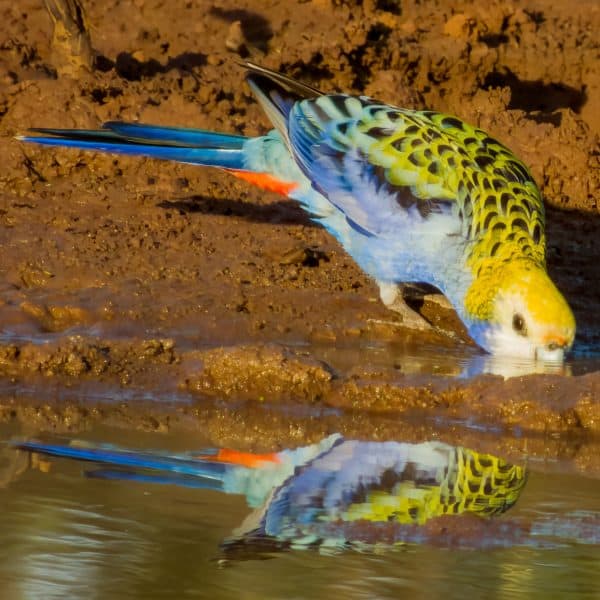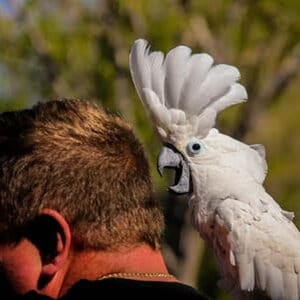Last Updated on by Mitch Rezman
Pet birds are fascinating creatures and make wonderful companions, but ensuring that they receive a nutritious diet is essential for their health and happiness.
With a vast array of bird food options available, it can be confusing to determine which one is the best for your pet bird. In this article, we’ll explore the different types of pet bird food and provide you with a comprehensive guide to feeding your feathered friend.
The Different Types of Pet Bird Food
Pet birds require a balanced diet that includes a variety of foods, including seeds, pellets, fruits, vegetables, and occasionally, insects. Let’s take a look at the different types of pet bird food and their benefits.
Seeds are a staple in many pet birds’ diets and provide essential nutrients like protein, vitamins, and minerals. Some popular seed options include sunflower seeds, millet, and canary seed ~ read: What is The Recipe for Your Perfect Parakeet Blend Seed Mix?
While seeds are a great source of nutrition, it’s important to note that they should only make up a portion of a pet bird’s diet and should not be the sole source of food.
That said budgies in the Australian Outback have been living on seeds and grass for 100 million years.
Pellets are a complete and balanced food source for pet birds, providing all the essential nutrients they need in one convenient form. Unlike seeds, pellets do not contain shells, which can make it easier for pet birds to digest. Many pet birds enjoy eating pellets, but it may take some time for them to get used to them.
The right pellet is the one your bird will eat and pellets are not created equally ~ read: What’s the Story with Parrot Food Pellets.
Fruits and Vegetables
Fruits and vegetables are an excellent addition to a pet bird’s diet and provide essential vitamins and minerals. Some popular options include apples, carrots, and spinach. When feeding your pet bird fruits and vegetables, it’s important to wash them thoroughly to remove any pesticides or chemicals.
For palatability, it can be easier to use a food chopper ~ read: How Do I Get My Budgies to Eat Veggies.
Insects
Insects are a great source of protein for pet birds and can provide essential vitamins and minerals. Some pet birds, such as parrots, enjoy eating live insects like mealworms or crickets. However, it’s important to note that not all pet birds enjoy eating insects and it may take some time for them to get used to the taste.
Feeding Your Pet Bird: A Comprehensive Guide
Now that you’re familiar with the different types of pet bird food, let’s take a look at how to feed your pet bird.
Quantity
The amount of food your pet bird needs will vary depending on its species, size, and activity level. Our three parrots get a 1 oz scoop in a ceramic dish and placed in their respective birdcages. That gets topped off once a day at about 4 PM when the Ringneck & Quaker come upstairs from their work cages.
The budgies get their Tweeky Cleans emptied into a Pyrex pie dish placed at the bottom of their PrevuePet aviary and the 3 hanging feeders get refilled daily. This allows for abundant food available to all avoiding jealousies and infighting. The glass dish gets dumped every other day.
Frequency
When it comes to watering, we keep vitamin enriched water in all the birds watering dishes that get replaced roughly every 12 hours.
It’s important to choose the right type of food and water dishes for your pet bird. For food, look for a heavy ceramic or stainless steel dish to prevent tipping. For water, look for a dish that is shallow enough for your pet bird to stand in, but deep enough to prevent spillage.
Pet Bird Food FAQs
What are the benefits of feeding my pet bird a balanced diet?
Sure, here are some frequently asked questions and answers about pet bird food:
- What are the benefits of feeding my pet bird a balanced diet? A balanced diet is crucial for your pet bird’s overall health and longevity. It can improve their feather quality, enhance their immune system, increase their lifespan, and keep their beak, bones, and other body parts healthy. A balanced diet can also help prevent obesity and other diet-related diseases. But not without flight or wing flapping exercises ~ learn more
- What should a balanced diet for a pet bird include? A balanced diet for a pet bird should include a variety of foods, such as high-quality bird pellets, a variety of fresh fruits and vegetables, and a limited amount of seeds and nuts. Some birds may also benefit from additional protein sources like cooked eggs or lean meats. The exact proportions will depend on the species of bird.
- Can I feed my bird human food? Some human foods are safe for birds, but others can be toxic. Safe foods generally include fruits, vegetables, cooked eggs, and cooked lean meats. You should avoid feeding your bird avocado, chocolate, caffeine, alcohol, and foods high in salt or sugar.
- How often should I feed my pet bird? Most pet birds should have food available at all times. They have a high metabolism and need to eat frequently. However, fresh foods like fruits and vegetables should be offered daily and removed after a few hours to prevent spoilage.
- What are the signs of a poor diet in birds? Signs of a poor diet in birds can include weight loss or gain, dull or discolored feathers, feather plucking, lethargy, changes in droppings, and a decreased appetite. If you notice any of these signs, it’s important to consult with a vet.
- Can I feed my bird only seeds? While seeds can be a part of a bird’s diet, they should not be the only food your bird eats. Seeds are high in fat and lack many of the essential nutrients that birds need. A diet consisting only of seeds can lead to nutritional deficiencies and health problems.
Remember, the specific dietary needs can vary greatly depending on the species of the bird, so it’s always best to consult with a vet or a bird specialist to determine the best diet for your pet bird.
Video from 2021
Chili our Quaker will eat or taste anything and everything.
Keto our ringneck and Barney our Cockatiel are far choosier.
Because all the adult budgies were already eating chopped veggies daily and the 3 juveniles were fed chopped veggies daily prior to fledging, it’s no wonder when the three young hooligans are the first to dive into (literally) the veggie dishes each morning.
Written by Mitch Rezman
Approved by Catherine Tobsing
Author Profile
Latest entries
 The Traveling BirdJune 26, 2025Can You Name 5 Parrot Species That Are Living Wild in the USA?
The Traveling BirdJune 26, 2025Can You Name 5 Parrot Species That Are Living Wild in the USA? Bird BehaviorJune 26, 2025How is it Parrots Are Problem Solvers Social Animals and Even Use Tools?
Bird BehaviorJune 26, 2025How is it Parrots Are Problem Solvers Social Animals and Even Use Tools? Bird & Parrot AnatomyJune 25, 2025How a Tiny Chemical Modification Makes Parrots Nature’s Living Paintings
Bird & Parrot AnatomyJune 25, 2025How a Tiny Chemical Modification Makes Parrots Nature’s Living Paintings PigeonsJune 20, 2025How Do Parrots Thrive in Cities Outside Their Native Habitats?
PigeonsJune 20, 2025How Do Parrots Thrive in Cities Outside Their Native Habitats?




